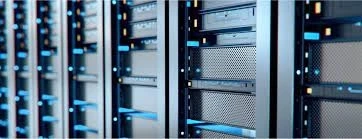Critical files disappear in an instant—a hardware failure, ransomware attack, or simple human error can wipe out years of work. While cloud storage offers convenience, network storage solutions provide the control, security, and reliability that businesses and power users need to truly protect their most valuable data.
Network-attached storage (NAS) systems have evolved from simple file servers into comprehensive data protection platforms. These dedicated storage devices connect directly to your network, offering centralized access to files while providing robust backup capabilities and advanced security features that far exceed what traditional external drives can offer.
Choosing the right network storage solution requires understanding which features matter most for your specific needs. Whether you're protecting family photos or mission-critical business documents, the right system can mean the difference between a minor inconvenience and a catastrophic data loss.
Why Network Storage Solutions Excel at File Protection?
Network storage solutions offer several advantages over traditional backup methods. Unlike external drives that require manual intervention, NAS storage solutions operate continuously, providing real-time protection and instant access to your files from any connected device.
Redundancy stands as the cornerstone of effective file protection. Quality NAS systems support RAID configurations that automatically duplicate your data across multiple drives. If one drive fails, your files remain safe on the remaining drives while you replace the failed component.
Remote access capabilities allow you to reach your files from anywhere while maintaining complete control over your data. Unlike cloud services where your files reside on someone else's servers, network storage solutions keep your data under your direct management.
Key Features for Maximum File Protection
RAID Configuration Options
RAID technology provides the foundation for protecting critical files against hardware failures. RAID 1 mirrors data across two drives, ensuring that if one drive fails, an exact copy exists on the second drive. This configuration offers excellent protection for smaller installations where storage efficiency is less critical than reliability.
RAID 5 requires at least three drives and can survive one drive failure while maintaining good performance and storage efficiency. Business users often prefer this configuration because it provides protection without sacrificing half of their storage capacity.
RAID 6 offers protection against two simultaneous drive failures but requires four drives minimum. This configuration suits environments where data loss would be catastrophic and the cost of additional drives is justified by the enhanced protection.
Automated Backup Systems
Automated backup scheduling ensures your files are protected without requiring daily attention. Look for systems that support multiple backup destinations, including cloud services, external drives, and remote NAS systems. This multi-tier approach provides comprehensive protection against various failure scenarios.
Snapshot technology creates point-in-time copies of your entire system, allowing quick recovery from ransomware attacks or accidental file deletions. Some advanced systems support thousands of snapshots with minimal storage overhead, providing weeks or months of recovery points.
Advanced Security Features
Strong user authentication and access controls prevent unauthorized access to your critical files. Support for Active Directory integration simplifies user management in business environments while maintaining security standards.
Encryption capabilities protect your data both at rest and in transit. Hardware-accelerated encryption prevents performance degradation while keeping files secure. SSL/TLS support ensures encrypted connections between your devices and the storage system.
Built-in firewall functionality controls which devices and services can access your storage system. Regular security updates from the manufacturer help protect against emerging threats and vulnerabilities.
Choosing the Right NAS Storage Solutions
Capacity Planning
Start by calculating your current storage requirements, then multiply by three to account for future growth. Most users underestimate how quickly their storage needs expand, especially when dealing with high-resolution photos, videos, or business documents.
Look for systems that support multiple drive bays. A two-bay system might seem sufficient initially, but a four-bay or eight-bay configuration offers more flexibility as your needs grow. Hot-swappable drives allow you to replace or upgrade storage without shutting down the entire system.
Performance Considerations
Network performance directly impacts how quickly you can access and transfer files. Gigabit Ethernet should be the minimum standard, but 2.5GbE or 10GbE ports offer significant advantages for high-bandwidth applications like video editing or large file transfers.
Processing power and memory determine how well your system handles multiple simultaneous users and demanding applications. Look for systems with at least 2GB of RAM, though 4GB or more is preferable for advanced features and better performance.
Expandability Options
Modern NAS systems function as mini-servers, running applications that extend their capabilities beyond basic file storage. A robust app ecosystem can transform your storage system into a media server, surveillance hub, or productivity platform.
USB ports enable direct connections to printers, external storage, or other peripherals. eSATA ports provide faster connections to external drives for backup or archive purposes.
Implementation Best Practices
Initial Setup
Configure your RAID array before adding critical files to ensure proper redundancy from the start. Test your backup systems thoroughly and verify that you can successfully restore files from your backups.
Set up user accounts with appropriate permissions to limit access to sensitive files. Enable encryption for maximum security, especially if your NAS storage solutions will be accessible from outside your local network.
Ongoing Maintenance
Monitor drive health regularly and replace drives at the first sign of problems. Most NAS systems include monitoring tools that alert you to potential issues before they cause data loss.
Keep your system's firmware updated to protect against security vulnerabilities and ensure optimal performance. Test your backup systems periodically to verify they're working correctly.
Maximizing Your Data Protection Investment
Network storage solutions represent a significant investment in your data's security and accessibility. Choose systems that can grow with your needs rather than requiring complete replacement as your requirements expand.
Consider the total cost of ownership, including drives, future upgrades, and ongoing maintenance. The cheapest upfront option might cost more in the long run if it lacks essential features or requires frequent hardware replacements.
Research manufacturers support quality and software update frequency. A well-supported system with regular updates provides better long-term value than a feature-rich system with poor ongoing support.


